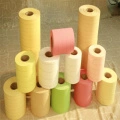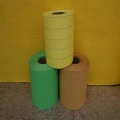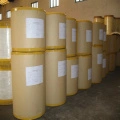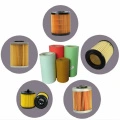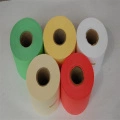Oil filter paper, a critical consumable in fluid filtration, is widely used across diverse industries from commercial fryer filter paper for food service to diesel filter paper for automotive and industrial engines. With demands for efficiency, durability, and cost-effective filtration rising, high-performance oil filter paper solutions are shaping the evolution of filtration systems worldwide. In this in-depth guide, we delve into the industry’s key trends, technology parameters, manufacturing processes, comparison of major suppliers, customizable solutions, and real-world case studies — equipping engineers, procurement specialists, and technical officers with the crucial insights for informed buying and system design.
Industry Trends: Evolution of Oil Filter Paper Solutions
-
Shift towards high-efficiency, eco-friendly filter media: The global oil filter paper market, valued at $2.3 billion in 2023[1], is projected to reach $3.7 billion by 2030, at a CAGR of 7.2%. Growth is driven by stricter environmental standards (ISO 14001, EPA) and the demand for superior filtration performance.
-
Emphasis on customization: From diesel filter paper with suitable micron ratings to NSF-compliant commercial fryer filter paper, tailored solutions for unique applications are rapidly expanding.
-
Advancements in filter paper materials & process control: Increasing R&D in cellulose blends, nonwoven synthetics, and advanced composite filter papers deliver increased dirt-holding capacity, chemical resistance, and service life.
-
Digital production and quality control: Automated inspection machines and IoT audit trails are now standard at top-tier oil filter paper suppliers, ensuring compliance with global standards (ISO 29463, ANSI S12.7).

Oil Filter Paper Specifications & Parameter Table
| Parameter |
Value/Range |
Testing Standard |
Notes |
| Basis Weight |
100–350 g/m² |
ISO 536 |
Impacts capacity & strength |
| Thickness |
0.5–1.2 mm |
ISO 534 |
Customization available |
| Filtration Efficiency |
≥98% (at 5μm, 20μm, or 40μm) |
ISO 16889 |
Application-dependent |
| Air Permeability |
50–320 L/m²·s |
ISO 9237 |
Determines flow rate |
| Wet Tensile Strength |
≥2.5 kN/m (longitudinal) |
ISO 1924-2 |
Key for durability |
| PH Value |
Neutral (6.5 - 7.5) |
TAPPI T435 |
Ensures chemical stability |
| Temperature Resistance |
Up to 180°C |
Internal Test |
High for fryer/diesel |
| Material |
Pure Cellulose/Cellulose-Polyester Composite |
ISO 1833 |
Tailored for application |
Material Market Share: Oil Filter Paper (2023, Global)
Manufacturing Process & Workflow of Oil Filter Paper
Raw Material Selection
Cellulose pulp (wood or cotton linter), high-strength synthetic fibers, and additives are precisely blended based on target filtration specs.
→
Wet Laying & Forming
Slurry is formed on a wire mesh, water is drained, creating a uniform web layer that defines the initial basis weight and structure.
→
Calendering & Drying
Paper passes through heated cylinders. Surface smoothness and thickness are calibrated; controlled moisture content enhances performance.
→
Surface Treatment
Sizing/coating or resin impregnation for oil resistance, anti-corrosion, and strengthening according to application type.
→
Precision Cutting
Finished spool or sheet is cut by CNC machines to custom sizes; edge trimming for consistent fitting in filter elements.
→
Testing & Quality Assurance
Products undergo ISO/ANSI-compliant testing (filtration efficiency, tensile strength, wet/dry strength, pore size, thermal resistance).
→
Packaging & Delivery
Cleanroom wrapping to avoid contamination; batch-coded for full traceability.
For video walkthroughs of the production line, see: Oil Filter Paper Manufacturing Process Video
Technical Advantages of Modern Oil Filter Paper
- Precision Filtration: Controlled pore structure enables consistent particle retention as low as 5μm, crucial for protecting engine components and food product quality.
- High Wet Strength: Engineered for >2.5 kN/m (ISO 1924-2), resisting breakdown in moist or high-velocity flow environments.
- Thermal & Chemical Resistance: Certified operation up to 180°C, suitable for deep fryer & heavy machinery oil cleaning.
- Long Service Life: Advanced composites offer up to 40% longer change intervals vs traditional cellulosic filter papers[2].
- Eco-Friendly & Food Safe: Formulated with FDA-compliant additives and water-based resin systems, supporting both industrial and food & beverage applications.
- Custom Fit & Versatility: CNC processed, any format – roll, precut, or pleated – for seamless integration in filtration assemblies.
Oil Filter Paper vs Competitors: Product Comparison Table
| Brand |
Material |
Filtration Efficiency (5μm) |
Wet Strength (kN/m) |
Service Life (h) |
Certifications |
| Our Oil Filter Paper |
Cellulose-Polyester Composite |
≥98.5% |
2.7 |
≥650 |
ISO 9001, FDA, SGS |
| Competitor A |
Pure Cellulose |
94% |
2.4 |
400–500 |
ISO 9001 |
| Competitor B |
Cellulose-Synthetic Blend |
96% |
2.3 |
530 |
ISO 9001, FDA |
| Competitor C (Import) |
Nonwoven Synthetic |
99% |
2.6 |
800 |
ISO 14001, FDA |
Filtration Efficiency by Particle Size (μm) – Lab Results
Application Scenarios: Where is Oil Filter Paper Used?
-
Food Service: Commercial fryer filter paper is essential for restaurant and industrial kitchens, capturing fine carbon, crumbs, and byproducts to extend oil life and maintain food safety.
-
Automotive: Diesel filter paper in oil, fuel, and air filters for cars, trucks, and off-highway vehicles, protecting injectors and turbo bearings against wear particles.
-
Petrochemical & Metallurgy: High-volume hydraulic and lubrication systems rely on robust filter papers to maintain fluid cleanliness and reduce corrosion.
-
Water Treatment: Used as pre-filtration and protection for expensive membranes in municipal and industrial give-drainage systems.
-
Process Industries: Oil mist separators, chemical filtration lines, and compressor stations benefit from fast, efficient solid-liquid separation.
Supplier Comparison & Customization: Choosing the Right Oil Filter Paper Partner
-
Global Players: Companies like Ahlstrom, Hollingsworth & Vose, and our Oil Filter Paper stand out for reliability, technical support, and rapid fulfillment in various regions.
-
Key Metrics: Evaluate supplier by material traceability, consistency, on-time delivery record (≥98%), and ISO/QA documentation availability.
-
OEM Customization: Collaborative development for micron rating, cut, roll width, basis weight, and resin compatibility per your application.
-
Technical Consulting: Leading oil filter paper suppliers provide on-site analysis, integration training, and inventory management services for stable production.
Customized Oil Filter Paper Solutions: Your Application, Your Specs
- Micron-Customizable: Fine (1-10μm) or coarse (up to 80μm) options tailored for your contaminant profile.
- Thermal & Chemical Adaptivity: Special coatings/resin impregnation for aggressive environments (extended fryer, hydraulic, or synthetic oil systems).
- Shape & Format: From 4” discs (fryers) to 80” industrial jumbo rolls up to 3,000 meters, or pre-pleated filter inserts.
- Color Coding & Branding: Custom printing, logo embedding, and batch QR-code verification for supply chain transparency.
- Fast Prototyping: Sample lead times as short as 7 working days, production delivery typically 14–28 days depending on order size and configuration.
Case Studies: Oil Filter Paper in Action
-
Case 1: Commercial Fryer Chain (Global QSR)
- Replaced legacy paper with FDA-rated commercial fryer filter paper (32 g/m², 99% @10μm).
- Result: Oil lifetime increased by 20%, unplanned downtime reduced by 30% (source: customer report Q4/2023).
-
Case 2: Commercial Fleet Maintenance
- Adopted reinforced diesel filter paper, cellulose-polyester blend, for 150-truck logistics firm.
- Result: Fleet-wide engine wear particles reduced by 19% (per ISO 4406 samples); filter change interval improved >35%.
-
Case 3: Petrochemical Refinery – Lube Oil Filtration
- Switched to composite sheet (120g/m²) with anti-corrosion surface treatment.
- Result: Oil system MCP (Mean Contaminant Particle) lowered from 24/21/18 to ISO class 18/14/11 in 6 weeks.
-
Case 4: Regional OEM Filter Manufacturer
- Co-developed oil filter paper with custom anti-static coating and RFID batch validation for aftermarket filter elements.
Global Oil Filter Paper Market Size Trend (2018-2024, USD Billion)
Certifications & Quality Assurance
- All batches of oil filter paper are manufactured under ISO 9001:2015 and ISO 29463 systems for traceability and consistency.
- FDA, SGS, and NSF certifications available for food service grades.
- ROHS/REACH compliance for global automotive/industrial distribution.
- Rigorous lifespan and filtration testing documented; batch records digitally archived for 7 years.
Lead Times, Warranty & Customer Support
- Sample/Prototype: ≤7 business days; Typical OEM production: 2–4 weeks (customized specs/large batch).
- Warranty: All delivered goods guaranteed defect-free for at least 18 months (standard), with extended support.
- Traceability: Batch-level QR code and digital CoA (Certificate of Analysis) provided with each shipment.
- Global technical support, emergency shipment options and application engineering consulting available 24/7.
- More details at: Oil Filter Paper Product Page
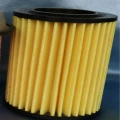
Oil Filter Paper: Professional FAQ & Industry Terms
1. What are the main materials used in oil filter paper?
The most prevalent oil filter paper material includes pure cellulose (wood pulp or cotton linter), cellulose-polyester composite, and advanced nonwoven synthetics. Cellulose-polyester blends offer improved wet strength and longevity, making them the best option for demanding industrial and automotive applications.
2. What is the standard basis weight and its impact?
Basis weight (ISO 536) for oil filter paper typically ranges from 100–350 g/m². Heavier paper supports higher dirt holding and durability but may require higher pressure drop. For commercial fryer filter paper, 32–60 g/m² is optimal, while diesel/lubrication filters generally use 120–180 g/m².
3. How does resin impregnation improve filter performance?
Resin treatment (often phenolic, acrylic, or epoxy) is used to strengthen oil filter paper, improve thermal and chemical resilience, and maintain structure under load. Properly impregnated paper complies with ISO/ANSI standards for high-temperature and aggressive chemical environments.
4. What is the significance of micron rating in oil filter paper?
The micron rating specifies the smallest particle size retained with a specified efficiency (often 95-99%). Diesel filter paper for modern engines targets 5–10μm, while commercial fryer filter paper usually uses 20–40μm. Customization is available for specialty applications.
5. What international standards apply to oil filter paper?
Leading standards: ISO 29463 (high-efficiency filtration), ISO 16889 (hydraulic filter elements), ANSI S12.7 (performance testing), FDA (food-grade). Ensure your supplier provides complete documentation.
6. How do you select the right oil filter paper for my system?
Define contaminant size and type, target efficiency, operation temperature, exposure to chemicals, mechanical load (burst, wet strength), and installation constraints. Consult leading oil filter paper suppliers for case-specific recommendations and validation samples.
7. What is the recommended storage & handling method?
Store oil filter paper in humidity-controlled environments (
Industry References & Further Reading
-
Industrial Filter Paper Market Analysis – MarketsandMarkets
-
Recent Developments in Oil Filter Paper Technology – ResearchGate
-
Oil Filter Media Testing & Industry Discussions – FiltrationForum.com
-
TAPPI Filter Media Technical Resources
-
Oil Filter Paper – Supplier Technical Datasheet
